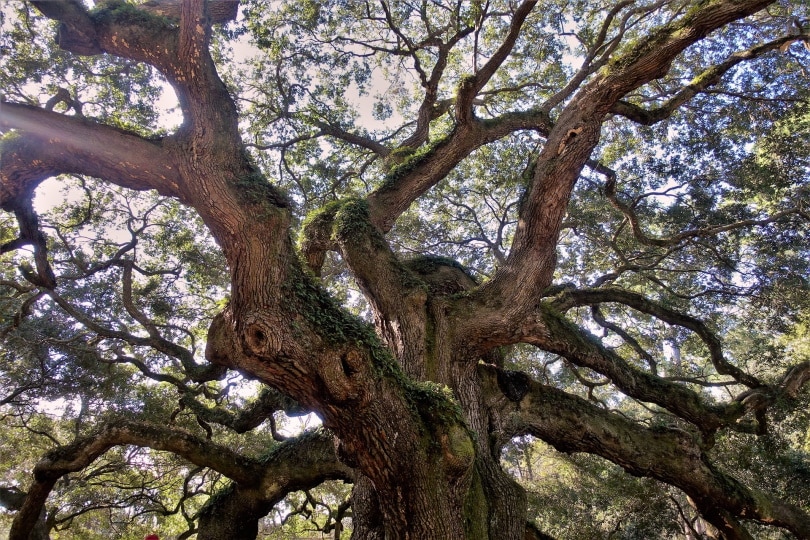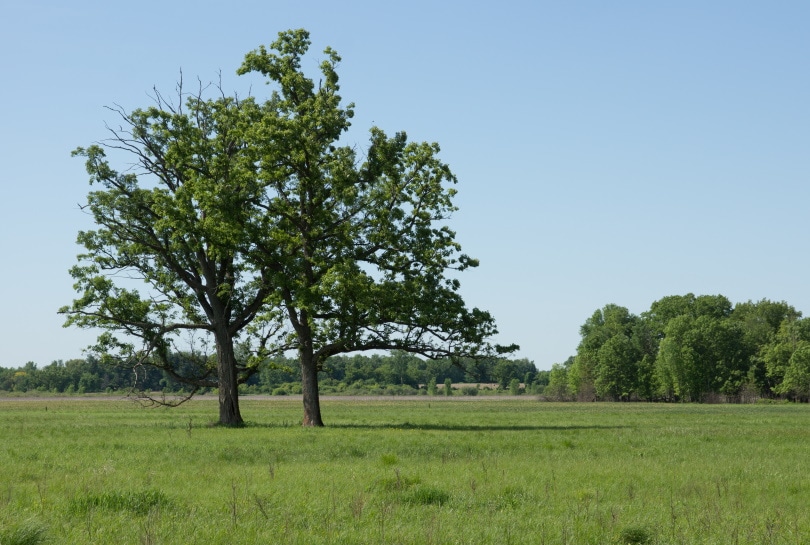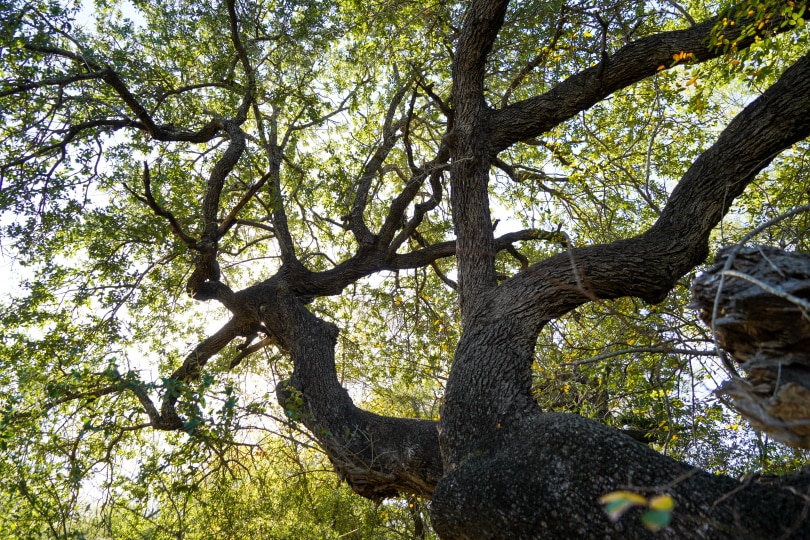7 Different Types of Oak Trees in Texas (With Pictures)
-

- Last updated:

Whether you’re a native Texan or new to the Lone Star State, you must have noticed the oak trees. Majestic, stately, and found all over the state, these large trees provide shade, shelter for local wildlife, and plenty of acorns as well.
In fact, Texas is pretty famous for its oak trees. However, many Texas residents don’t realize that even after a stately oak tree has breathed its last, its branches still offer shelter to small animals and birds for many years to come. There are a few different types of oak trees you can find in Texas. In this guide, we’ll list a few and tell you a bit about them as well.

The 7 Types of Oak Trees in Texas
1. Post Oak (Quercus stellata)

The Post Oak is one of the most important oak trees in Texas because it produces a large number of acorns for wildlife. This tree also grows almost everywhere in the state. The reason this particular tree grows so well here is because it requires very little water and tolerates the heat remarkably well. That’s a great thing because you already know just how sweltering the summers can get if you live in Texas. These trees have a diameter of around two feet and grow to be up to 50 feet tall.
If you’re new to Texas and decide to plant a Post Oak tree on your property, make sure you don’t overwater it and that you keep its root system intact as well.
2. Live Oak (Quercus virginiana)

The Live Oak tree is well-known for its sprawling branches and wide canopies. These stately trees can grow up to 60 feet tall, growing about two feet per year. While these trees can grow in partial shade, they do love the full sunlight.
They are also quite adaptable when it comes to the type of soil they grow in as well. They produce enough acorns to attract quite a few of the Texas wildlife to your yard, and though this is the state tree in Georgia, it grows well in the Lone Star State also.
3. Shumard Red Oak (Quercus shumardii)
The Shumard Red Oak tree stands 120 feet tall at its highest and can grow to fifty feet wide in the right soil, which needs to be moist and well-drained for the best results. This tree was named after a state geologist from Texas named Benjamin Franklin Shumard, who lived there in the 1800s.
Also called the Swamp Red Oak and the Spotted Oak, this tree is tolerant to drought, long-lived, and grows at a medium to fast rate. Planting one of these beauties in your yard means you can look forward to having purple and red leaves in the autumn of the year.
4. Bur Oak (Quercus macrocarpa)

If you’re looking for a huge oak tree to plant in your yard, then you need to look no further than the Bur Oak. This tree can reach a height of 100 feet at maturity. However, they grow slowly but live around 300 years, sometimes more, so generations of your family can enjoy them.
While this tree requires full sunlight to grow and thrive, it does tolerate air pollution and the stress of extreme heat well. Its leaves are long and lobed, making it pretty easy to tell when you’re looking at a bur tree. Also called the Prairie Oak, this tree has large leaves and large acorns as well.
5. Mexican Oak (Quercus polymorpha)

The Mexican oak is a tree that works well in the climate of Texas. It grows around four feet in a year, so you won’t have to wait long to sit under the shade of its branches. If you’re searching for an oak tree that will fit in a small yard, this one is it, as in its maturity, it only reaches between 40 to 45 feet.
The leaves of this tree are more of an oval shape with serrated edges. You’ll also be able to enjoy this tree year-round as it only loses its leaves for a few weeks during the winter months.
6. Lacey Oak (Quercus Laceyi)
If you’re looking for an even smaller oak tree to grace your yard, the Lacey Oak can fill that bill as well. They grow from 20 to 30 feet in maturity and look great next to patios or decks, with their rounded canopy. The oak has leaves that have rounded edges and are a pretty blue-green color.
This tree produces plenty of acorns for the wildlife population and requires very little water, so make sure you plant yours in well-drained soil.
7. Chinquapin Oak (Quercus muehlenbergii)
The Chinquapin Oak stands about 70 feet tall and has leaves that are oblong feature sharp teeth. Also called the Chinkapin Oak, this tree has a round crown, so you’ll be sure to get plenty of shade from it as it grows. You’ll want to plant this tree in rich soil and in the path of full sunlight if you want to enjoy the gorgeous rust colors of the leaves come fall.
The acorns that fall from this tree are actually edible if you roast them and quite delicious.

These are seven of our favorite types of oak trees you can find in the great state of Texas. However, if you’re looking to plant one in your Texas backyard, remember to check the soil and do research to determine what’s best for the oak tree you intend to plant. It’s also important to watch out for oak wilt after planting your tree. We’ll talk a little about this disease in the section below.
Watch Out for Oak Wilt
One of the biggest threats to any oak tree in Texas is oak wilt. This is a fungal disease that’s often deadly for an oak tree but can be prevented. The disease affects the tree’s ability to retain water. Signs that your oak tree is suffering from oak wilt include leaves with yellow veins that eventually turn brown, and fungal mats, which are rarer but have been spotted occasionally.
When looking to avoid oak wilt, make sure that you only prune your trees between July and January and that you quickly treat any wounds to the tree during trimming so that they don’t become vectors for harmful insects. If you find that your tree has contracted oak wilt, you can call in a professional to see what can be done. You need to remove any diseased trees from your yard before they begin to spread to other trees on your property.
Related Read: White Oak vs Red Oak Tree: What’s the Difference?

Final Thoughts
This concludes our list of the different types of oak trees in Texas. As a Texas resident, you know that oak trees are a big part of the Lone Star State, so make sure you protect and respect these stately trees and take care of any you have planted on your property. The environment, your family, and the local wildlife will thank you for it.
You might also be interested in: 12 Types of Redwood Trees
Featured Image Credit: Philip Arno Photography, Shutterstock
Contents
